This grade II listed building was erected in 1910 as a car showroom and offices for John Clayton Beadle. He started his business in nearby Lowfield Street, in 1894, with two employees, making horse-drawn vehicles. In 1900, he erected workshops on the south side of Spital Street and, in 1910, added a large single-storey showroom and offices. During the two World Wars, production at Beadles was geared to the war effort, which included making floats for Sunderland Flying Boats.
A plaque documenting the history of The Flying Boat.
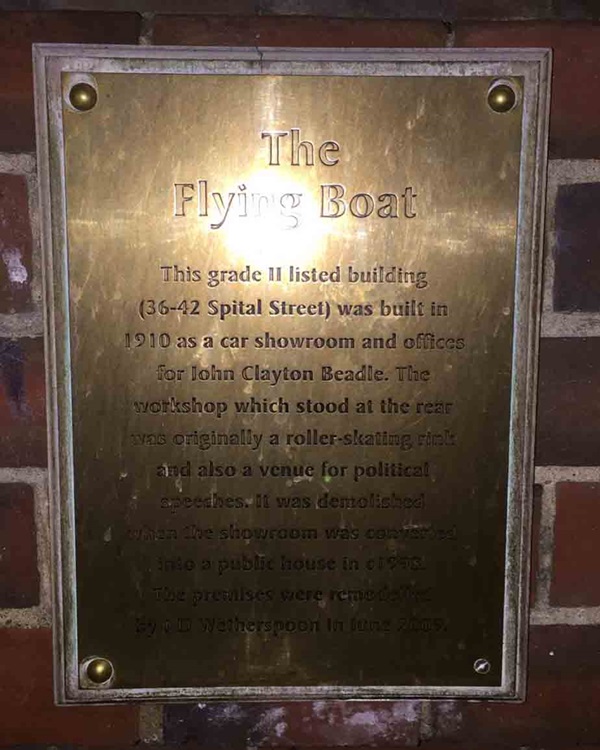
The plaque reads: This grade II listed building (36-42 Spital Street) was built in 1910 as a car showroom and offices for John Clayton Beadle. The workshop which stood at the rear was originally a roller-skating rink and also a venue for political speeches. It was demolished when the showroom was converted into a public house c1998. The premises were remodelled by J D Wetherspoon in June 2009.
Photographs and text about The Flying Boat.
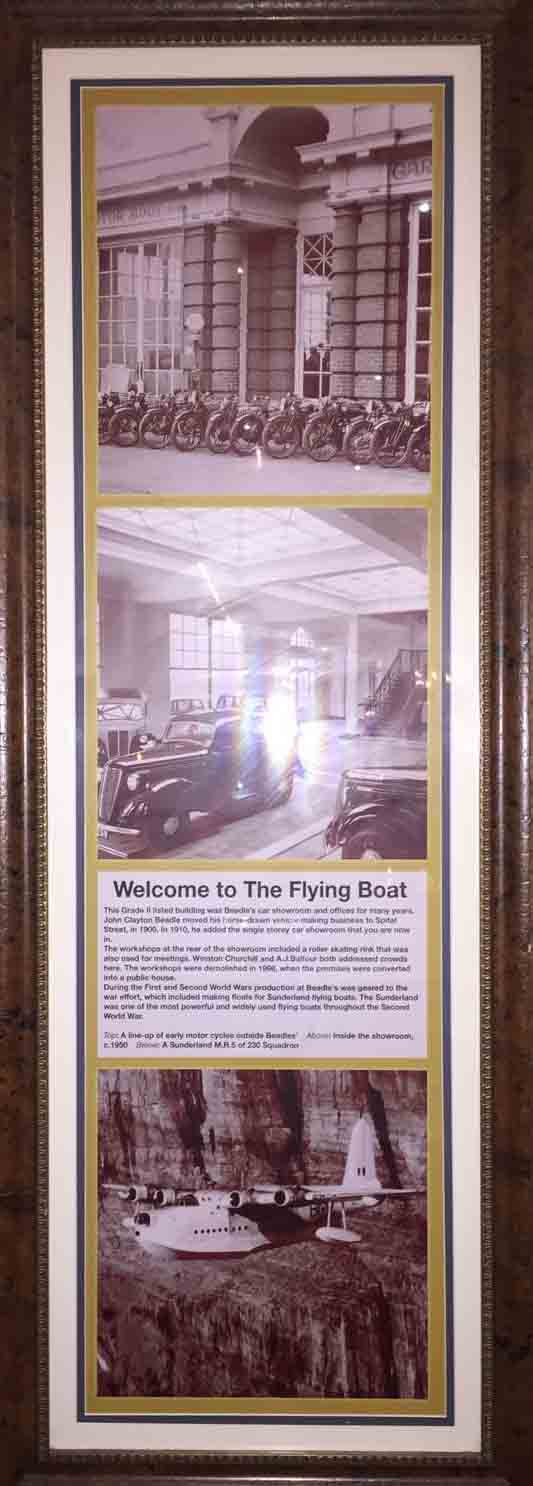
The text reads: This grade II listed building was Beadle’s car showroom and offices for many years. John Clayton Beadle moved his horse-drawn vehicle making business to Spital Street, in 1900. In 1910, he added the single storey car showroom that you are now in.
The workshops at the rear of the showroom included a roller skating rink that was also used for meetings. Winston Churchill and AJ Balfour both addressed crowds here. The workshops were demolished in 1998, when the premises were converted into a public house.
During the First and Second World Wars production at Beadle’s was geared to the war effort, which included making floats for Sunderland flying boats. The Sunderland was one of the most powerful and widely used flying boats throughout the Second World War.
Top: A line-up of early motor cycles outside Beadle’s
Above: Inside the showroom, c1950
Below: A Sunderland M.R.5 of 230 Squadron.
Illustrations and text about the origins of Dartford.

The text reads: Dartford began as a settlement next to the ford where the Roman road (known as Watling Street) crossed the River Darenth. The area later became a royal manor, recorded as Tarentfort in the Domesday Book, compiled in 1086.
In medieval times Dartford was a stopping place for pilgrims on their way to St Thomas Becket’s shrine, in Canterbury, as the shrine of William Perth, at Rochester Cathedral. Healing miracles were said to occur at Perth’s burial place.
The pilgrims were served by several inns. Dartford’s leading medieval inns le Hole Bull (on the site of the Royal Victoria and Bull Hotel), and further along High Street (nearer Wetherspoon’s Paper Moon), The Saracen’s Head, the Cock-on-the-Hoop and The Bell.
Top: Dartford parish church on the southern side of the Darenth
Centre: The 16th century manor house of Charles in High Street
Above: Dartford Market House and Shambles (demolished 1769).
Photographs and text about The Rolling Stones.
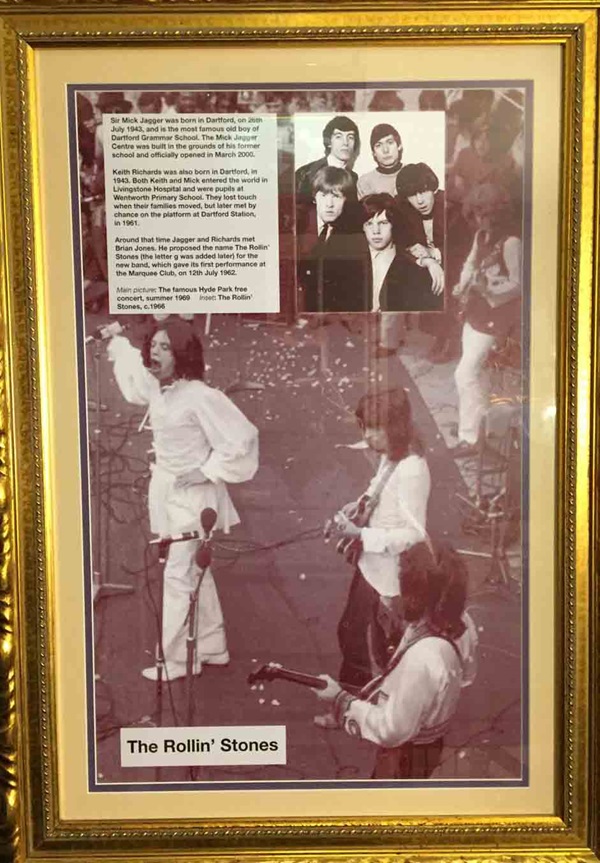
The text reads: Sir Mick Jagger was born in Dartford, on 26 July 1943, and is the most famous old boy of Dartford Grammar School. The Mick Jagger Centre was built in the grounds of his former school and officially opened in March 2000.
Keith Richards was also born in Dartford, in 1943. Both Keith and Mick entered the world in Livingstone hospital and were pupils at Wentworth primary school. They lost touch when their families moved, but later met by chance on the platform at Dartford Station, in 1961.
Around the time Jagger and Richards met Brian Jones. He proposed the name The Rollin’ Stones (the letter g was added later) for the new band, which gave its first performance at the Marquee Club, on 12 July 1962.
Main Picture: The famous Hyde Park free concert, summer 1969
Inset: The Rollin’ Stones, c1966.
Illustrations and text about Dartford’s pioneers of engineering.
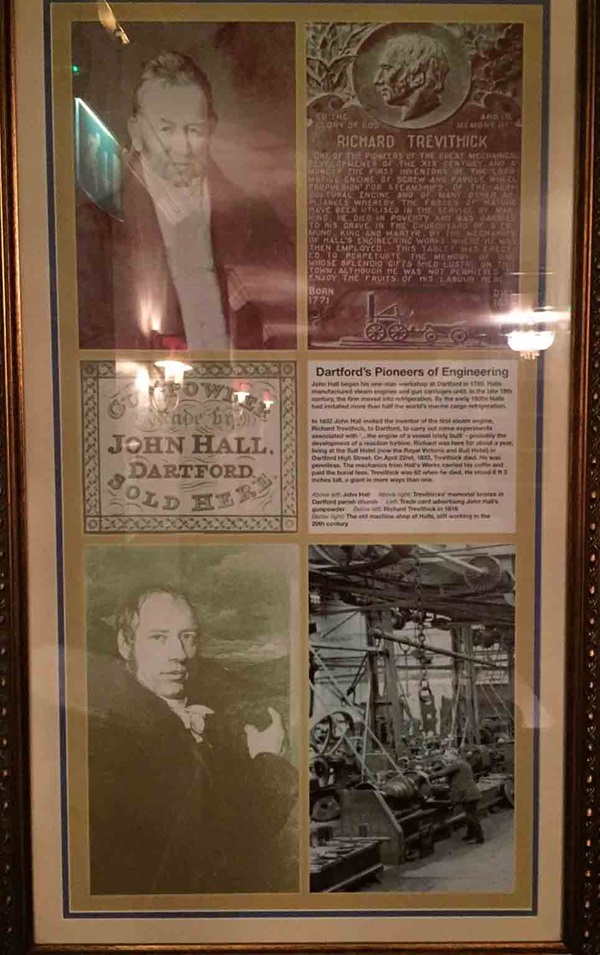
The text reads: John Hall began his one-man workshop at Dartford in 1785. Halls manufactured steam engines and gun carriages until, in the late 19th century, the firm moved into refrigeration. By the early 1920s Halls had installed more than half the world’s marine cargo refrigeration.
In 1832 John Hall invited the inventor of the first steam engine Richard Trevithick, to Dartford, to carry out some experiments associated with ‘…the engine of a vessel lately built’ – probably the development of a reaction turbine. Richard was here, for about a year, living at the Bull Hotel (now the Royal Victoria and Bull Hotel) in Dartford High Street. On April 22 1833, Trevithick died. He was penniless. The mechanics from Halls’ works carried his coffin and paid the burial fees. Trevithick was 62 when he died. He stood 6ft 3 inches tall, a giant in more ways than one.
Above left: John Hall
Above right: Trevithick’s memorial bronze in Dartford parish church
Left: Trade card advertising John Hall’s gunpowder
Below left: Richard Trevithick in 1816
Below right: The old machine shop at Halls, still working in the 20th century.
External photograph of the building – main entrance.
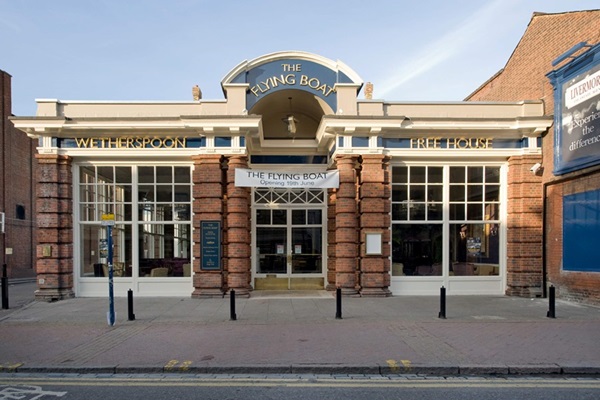
If you have information on the history of this pub, then we’d like you to share it with us. Please e-mail all information to: pubhistories@jdwetherspoon.co.uk